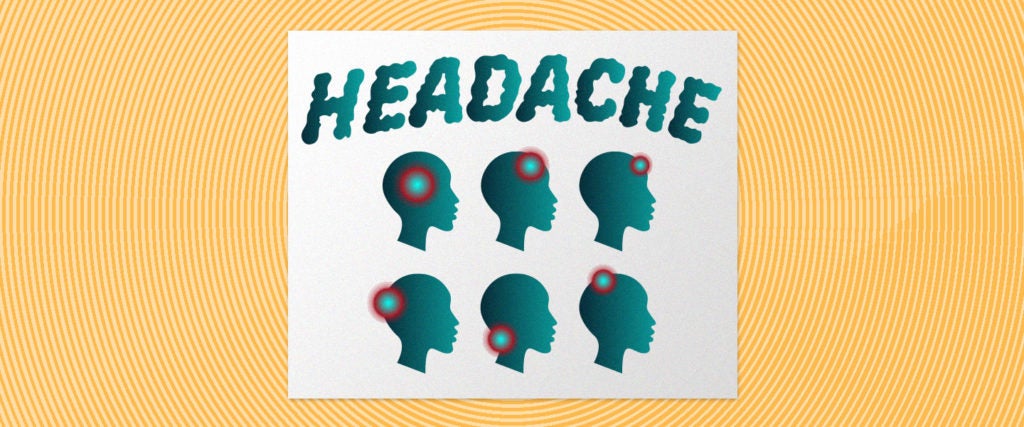Be it prolonged eye strain from transitioning between the good screen and the bad screen or stress-induced jaw clenching, the anxiety of living through our current hellscape has me suffering near-daily headaches. Or at least, that’s my highly unscientific (probably completely idiotic) assessment. Because to be honest, I’m mostly just regurgitating information I glean from grainy “headache maps” on the internet that look like this:

I’ll find one online and turn to my wife to say something like, “This headache is behind my eyes, so I guess that means I’m dehydrated and/or stressed.” Similar to the abundance of misleading health claims about hydration, headache maps are everywhere, each one communicating a variation of the same information on different heads. The simple, vague diagrams are so ubiquitous that they’ve become a category of memes unto themselves.

As such, it would obviously be impossible to fact-check every headache map in existence. But what about the overarching concept? Does the severity and location of your headache really mean anything?
Sorta.
As easy as it is to say “pain in your forehead means you’re stressed,” it’s more complicated than that. To start, there are actually many different types of headaches, but the three most common are tension, migraine and cluster. Each is caused by different things, and manifests in different ways.
Tension headaches are the result of contracting muscles in your head, but they’re otherwise hard to pin down. They could be restricted to the crown of your head, feel like a “band” encircling your dome or encompass your whole freakin’ noggin.

Which, of course, seemingly throws the logic of headache maps out the window. There is some validity, though, to their claims when you consider the type of pain in each location. Tension headaches, for instance, are often described as a dull, “tightening” feeling that lingers and can feel tender to the touch. Pair that with where the pain is located, and you should be able to start ruling out the laundry list of things that cause tension headaches — from eye strain, to lack of sleep, to stress, to dehydration, to caffeine withdrawals, to hunger.

Migraines can also manifest in all the same areas as tension headaches, but they usually stick to murdering just a single side of your head with throbbing pain, nausea and blurred vision. Unfortunately, this is where less helpful headache maps basically leave you to figure out the rest on your own. So, if you’re regularly suffering from migraines, try to notice a pattern, as migraines are often triggered by specific factors like changes in light, loud noises or lack of sleep. Don’t just hope a glass of water or quick round of masturbation will make it go away either. You probably need to go sit in a cool, dark room for a while. Even better, take a nap.

Finally, as many headache maps suggest, sharp pain confined to a small area, usually behind an eye, is probably a cluster headache. The thing is, cluster headaches can also manifest just about anywhere in the head — pain across the forehead, on the temples or even in the shoulders. What’s specific to them, though, is that they don’t last very long, and almost always happen at the same time, every day, sometimes for weeks on end, before suddenly going away — only to reappear the next month.
Long story short: Consulting the internet about what type of headache you have isn’t going to help as much as keeping track of all the possible causes. Over time, hopefully you’ll figure out which foods to avoid or plan to take breaks from your screen. Worst-case scenario, the pain will keep happening, at which point you should consult a real-life human physician — and not a meme.

